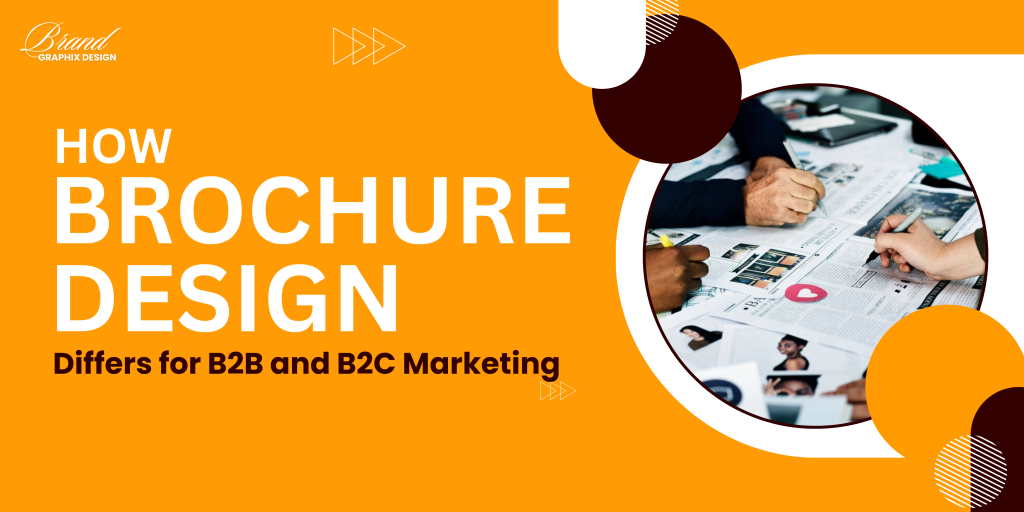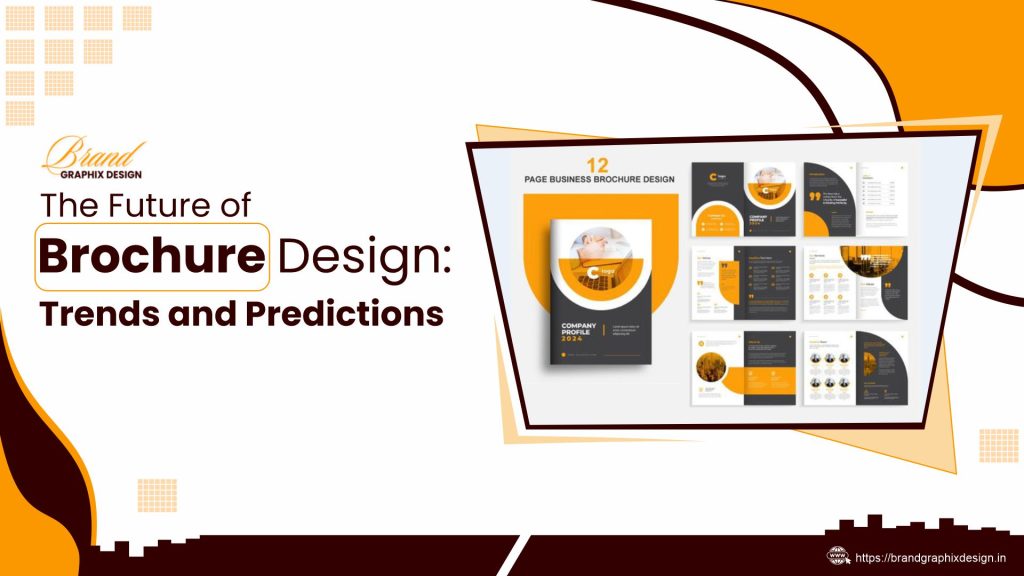Introduction : Brochure design plays a crucial role in marketing, serving as a visual and informational tool to engage potential customers. However, the design approach varies significantly between B2B (Business-to-Business) and B2C (Business-to-Consumer) marketing. While B2B brochures focus on professionalism, in-depth information, and logical appeal, B2C brochures prioritize emotional connection, vibrant visuals, and persuasive messaging. Understanding these differences ensures a more effective marketing strategy tailored to the target audience.
Target Audience and Communication Style : One of the key differences in brochure design for B2B and B2C marketing is the target audience. B2B brochures cater to professionals, decision-makers, and organizations, requiring a formal and detailed communication style. They emphasize data, case studies, and ROI-driven content. In contrast, B2C brochures target individual consumers, using engaging visuals, catchy headlines, and emotional appeal. The tone is often friendly, persuasive, and straightforward, making the content easily digestible.
Design Aesthetics and Visual Elements : B2B brochures adopt a clean, professional, and minimalistic design approach, utilizing corporate colors, structured layouts, and subtle graphics. The focus is on clarity and credibility, ensuring the content is easy to navigate. B2C brochures, on the other hand, incorporate bold colors, eye-catching imagery, and creative typography to grab attention. The design is more dynamic, aiming to evoke emotions and create a memorable impression that resonates with the consumer’s lifestyle and interests.
Content Depth and Information Presentation : The depth of content in brochures significantly differs between B2B and B2C marketing. B2B brochures provide extensive details, including industry insights, technical specifications, and in-depth explanations. They often feature white papers, testimonials, and product comparisons to establish trust. In contrast, B2C brochures prioritize concise and engaging content, using storytelling, product benefits, and strong calls to action. The goal is to quickly capture interest and drive immediate action from consumers.
Call-to-Action (CTA) and Engagement Approach : The call-to-action in B2B brochures focuses on long-term engagement, such as scheduling a meeting, downloading a whitepaper, or requesting a quote. The approach is strategic, aiming to nurture leads through the sales funnel. B2C brochures, however, have direct and action-oriented CTAs, such as “Buy Now,” “Limited Offer,” or “Visit Our Store.” The intent is to encourage impulse purchases or quick decision-making, aligning with consumer behavior.
Use of Testimonials and Case Studies : B2B brochures rely heavily on case studies, testimonials, and industry references to establish credibility and trust. Business clients seek proof of success before making investment decisions. B2C brochures, while sometimes including customer reviews, focus more on emotional storytelling and user experience. They highlight relatable scenarios and endorsements to connect with consumers on a personal level and influence purchasing behavior.
Distribution Channels and Format Variations : B2B brochures are commonly distributed through trade shows, corporate meetings, email campaigns, and digital downloads. The format often includes detailed reports, catalogs, and industry-specific booklets. B2C brochures, in contrast, are distributed through retail stores, direct mail, events, and digital advertisements. They are often designed as flyers, pamphlets, or interactive online brochures optimized for mobile viewing and quick reading.
Branding Consistency and Messaging : Maintaining branding consistency is vital for both B2B and B2C brochures, but the messaging approach differs. B2B brochures reinforce a brand’s authority, reliability, and industry expertise. They use precise language, formal tone, and structured content. B2C brochures, however, aim for emotional appeal, relatability, and entertainment. They use catchy slogans, engaging narratives, and visually appealing elements to strengthen brand recall and customer connection.
Conclusion : Brochure design in B2B and B2C marketing differs in several aspects, from audience targeting and design aesthetics to content depth and call-to-action strategies. B2B brochures emphasize professionalism, detailed information, and credibility, whereas B2C brochures focus on emotional engagement, bold visuals, and persuasive messaging. Understanding these distinctions allows businesses to create effective brochures that resonate with their intended audience and drive successful marketing campaigns.



